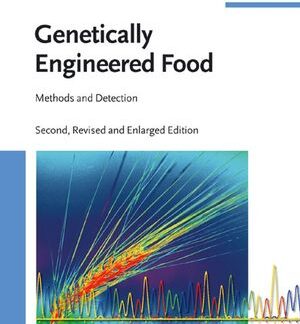Description
The Handbook of Criminological Theory, ISBN-13: 978-1118512388
[PDF eBook eTextbook]
Series: Wiley Handbooks in Criminology and Criminal Justice
560 pages
Publisher: Wiley-Blackwell; 1 edition (November 2, 2015)
Language: English
ISBN-10: 1118512383
ISBN-13: 978-1118512388
From the Back Cover
Bringing order and insight to a vast field that is constantly evolving, this handbook provides up-to-date, in-depth summaries of the most important theories in criminology, from classic deterrence theory and social disorganization to modern labeling theory and integrated theory. These original essays are clearly and accessibly written by top scholars in the field as well as up-and-coming scholars. For each theory, the handbook describes origins and assumptions, assesses current debates and research, points out knowledge gaps, offers directions for future research, and includes recommendations for further reading. In addition to discussion of specific theories, the essays address a host of broader issues and topics related to the field, such as the correlates of crime, testing theory, policy implications, and prediction. Encompassing theory, research, policy, and practice, this is an indispensable resource for students, scholars, and practitioners at all levels.
About the Author
Alex R. Piquero is Ashbel Smith Professor in the Program in Criminology in the School of Economic, Political, and Policy Sciences at the University of Texas at Dallas. He is also Adjunct Professor at the Key Centre for Ethics, Law, Justice, and Governance at Griffith University, Australia, and Faculty Affiliate at the Center for Violence and Injury Prevention in the George Warren Brown School of Social Work at Washington University in St. Louis. He is co-editor of the Journal of Quantitative Criminology and has published over 240 peer-reviewed articles in the areas of criminal careers, crime prevention, criminological theory, and quantitative research methods. He has collaborated on several books, including Offending from Childhood to Late Middle Age: Recent Results from the Cambridge Study in Delinquent Development (2013), Handbook of Quantitative Criminology (2011), and Key Issues in Criminal Careers Research: New Analyses of the Cambridge Study in Delinquent Development (2007).
Table of contents
Notes on Contributors vii
1 Introduction: Theory and Contemporary Criminology 1
Charles R. Tittle
2 Correlates of Crime 18
Matt DeLisi and Michael G. Vaughn
3 Theory Testing In Criminology 37
Travis C. Pratt
4 Deterrence 50
Thomas A. Loughran, Ray Paternoster, and Douglas B. Weiss
5 Contemporary Biosocial Criminology: A Systematic Review of the Literature, 2000-2012 75
J.C. Barnes, Brian B. Boutwell, and Kevin M. Beaver
6 A Developmental Perspective on Adolescent Risk]Taking and Criminal Behavior 100
Elizabeth Cauffman, Caitlin Cavanagh, Sachiko Donley, and April Gile Thomas
7 Social Disorganization Theory’s Greatest Challenge: Linking Structural Characteristics to Crime in Socially Disorganized Communities 121
Charis E. Kubrin and James C. Wo
8 Routine Activities, Delinquency, and Youth Convergences 137
Jose R. Agustina and Marcus Felson
9 Environmental Criminology 156
Aiden Sidebottom and Richard Wortley
10 Control as an Explanation of Crime and Delinquency 182
Chester L. Britt and Michael Rocque
11 Strain, Economic Status, and Crime 209
Robert Agnew
12 Social Learning Theory 230
Ronald L. Akers and Wesley G. Jennings
13 Cultural Processes, Social Order, and Criminology 241
Mark T. Berg, Eric A. Sevell, and Eric A. Stewart
14 Labeling Theory: Past, Present, and Future 271
Ruth Triplett and Lindsey Upton
15 Feminist Theory 290
Joanne Belknap
16 Critical Criminology 301
Martin D. Schwartz and Henry H. Brownstein
17 Integrating Criminological Theories 318
Marv Krohn and Jeffrey T. Ward
18 Developmental and Life]Course Theories of Crime 336
Tara Renae McGee and David P. Farrington
19 Biosocial Bases of Antisocial and Criminal Behavior 355
Frances R. Chen, Yu Gao, Andrea L. Glenn, Sharon Niv, Jill Portnoy, Robert Schug, Yaling Yang, and Adrian Raine
20 From Theory to Policy and Back Again 380
Scott H. Decker
21 How Do Criminologists Interpret Statistical Explanation of Crime? A Review of Quantitative Modeling in Published Studies 395
David Weisburd, Breanne Cave, and Alex R. Piquero
22 Situational Theory: The Importance of Interactions and Action Mechanisms in the Explanation of Crime 415
Per]Olof H. Wikstrom and Kyle Treiber
23 Macro]Level Theory: A Critical Component of Criminological Exploration 445
Eric P. Baumer and Ashley N. Arnio
24 What International Research Has Told Us About Criminological Theory 475
Olena Antonaccio and Ekaterina V. Botchkovar
25 Qualitative Criminology’s Contributions to Theory 497
Andy Hochstetler and Heith Copes
Index 521
What makes us different?
• Instant Download
• Always Competitive Pricing
• 100% Privacy
• FREE Sample Available
• 24-7 LIVE Customer Support




